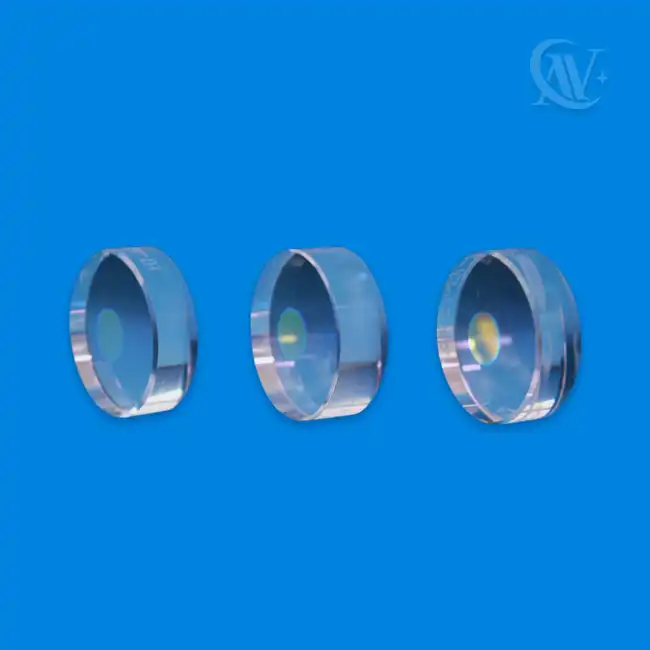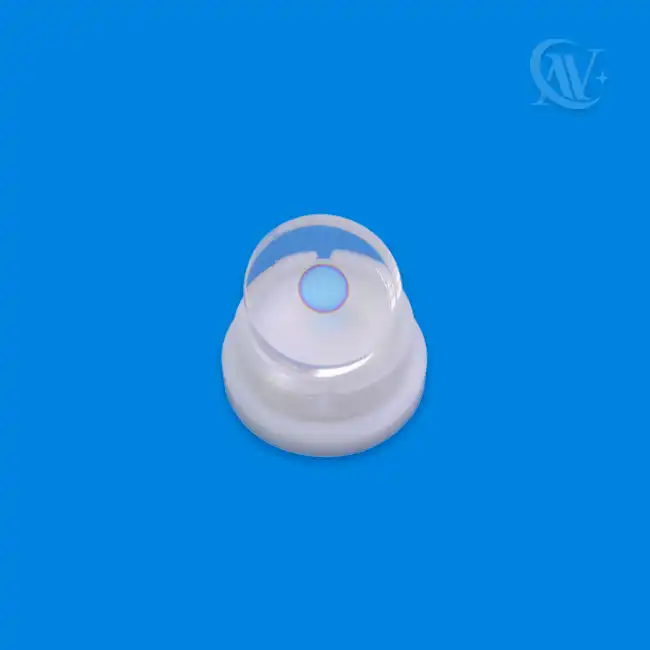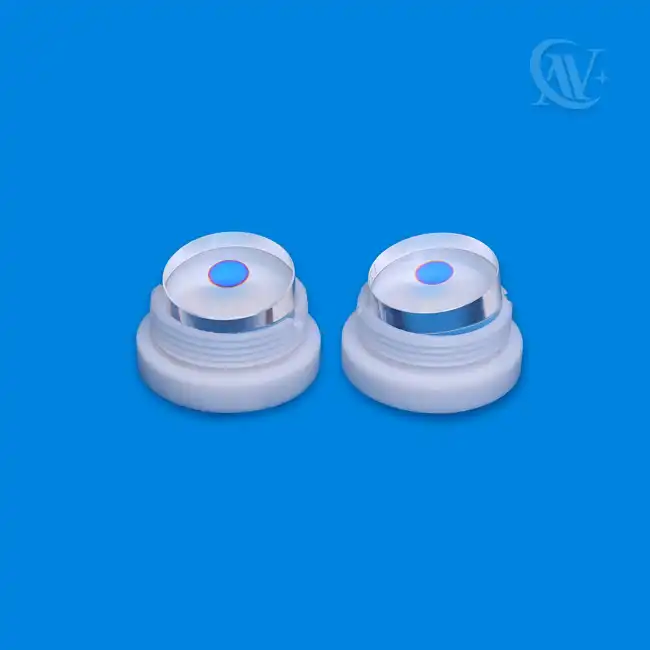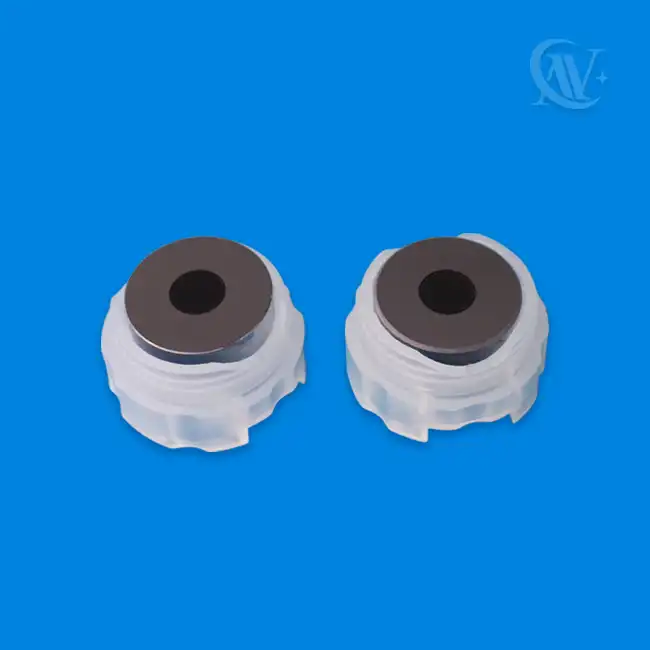What Makes a Super Stable Cavity Different from Regular Optical Cavities?
In the world of precision optics, stability is paramount. When it comes to optical cavities, the Φ50*100 Super Stable Cavity stands out as a remarkable innovation. But what sets it apart from regular optical cavities? Let's delve into the intricacies of this cutting-edge technology and explore its unique features, applications, and advantages.
The Anatomy of a Φ50*100 Super Stable Cavity
The Φ50*100 Super Stable Cavity is a marvel of engineering, designed to provide unparalleled stability in optical applications. Its name gives us a clue about its dimensions: Φ50 refers to the diameter of 50mm, while 100 indicates its length of 100mm. But there's more to this cavity than just its size.
At its core, the Φ50*100 Super Stable Cavity consists of two highly reflective mirrors positioned at precise distances. These mirrors are typically made from ultra-low expansion (ULE) glass or fused silica, materials chosen for their exceptional thermal stability. The cavity's cylindrical spacer, also crafted from ULE glass, maintains the critical distance between these mirrors with remarkable precision.
What truly sets the Φ50*100 Super Stable Cavity apart is its meticulously engineered design. Every aspect, from the mirror coatings to the spacer geometry, is optimized to minimize sensitivity to external perturbations. This includes thermal fluctuations, mechanical vibrations, and even changes in orientation with respect to gravity.
The result is a cavity that can maintain its length stability to an astonishing degree - often on the order of a few femtometers (10^-15 meters) over extended periods. This level of stability is crucial for applications requiring ultra-precise frequency references or exquisite control over laser properties.
Applications: Where Φ50*100 Super Stable Cavities Shine?
The exceptional stability of Φ50*100 Super Stable Cavities makes them invaluable in a wide range of cutting-edge applications. Let's explore some of the fields where these cavities are making a significant impact:
Time Frequency and Optical Atomic Clocks: In the realm of precision timekeeping, Φ50*100 Super Stable Cavities play a crucial role. They serve as ultra-stable frequency references, enabling the development of optical atomic clocks that can measure time with unprecedented accuracy. These clocks are so precise that they would lose less than a second over billions of years, opening up new possibilities in fields like geodesy, relativity tests, and even the search for dark matter.
High-Power Optical Gain Cavities: The Φ50*100 Super Stable Cavity's ability to maintain its properties under high-power conditions makes it ideal for use in optical gain cavities. These cavities amplify laser light, allowing for the generation of high-power, highly coherent laser beams. Applications range from industrial cutting and welding to advanced scientific instruments.
Laser Weapons and High-Power Lasers: In the defense sector, Φ50*100 Super Stable Cavities contribute to the development of laser weapons and other high-power laser systems. Their stability ensures consistent beam quality and pointing accuracy, critical factors in these advanced applications.
Ultraviolet Lasers: The stability of Φ50*100 Super Stable Cavities extends to shorter wavelengths, making them valuable in the development of ultraviolet lasers. These lasers find applications in fields such as photolithography, materials processing, and spectroscopy.
Laser Gyroscopes: In navigation systems, Φ50*100 Super Stable Cavities can be used to create highly accurate laser gyroscopes. These devices measure rotation rates with exceptional precision, crucial for applications in aerospace and maritime navigation.
Cavity Ring-Down Spectroscopy (CRDS): In the field of ultra-sensitive spectroscopy, Φ50*100 Super Stable Cavities enable CRDS techniques. This allows for the detection of trace amounts of gases and other substances, with applications in environmental monitoring, breath analysis, and industrial process control.
The Advantages of Φ50*100 Super Stable Cavities Over Regular Optical Cavities
Now that we've explored the applications, let's dive into the specific advantages that set Φ50*100 Super Stable Cavities apart from their regular counterparts:
Unparalleled Stability: The hallmark of Φ50*100 Super Stable Cavities is their extraordinary stability. While regular optical cavities may drift over time due to thermal expansion or mechanical stress, super stable cavities maintain their optical path length with femtometer-level precision. This stability translates directly into frequency stability for lasers locked to these cavities, enabling measurements and experiments that were previously impossible.
Superior Thermal Performance: Φ50*100 Super Stable Cavities are engineered to minimize thermal sensitivity. The use of ultra-low expansion materials, combined with sophisticated thermal management techniques, allows these cavities to maintain their properties across a wide temperature range. This thermal robustness is crucial for applications requiring long-term stability or operation in varying environmental conditions.
Enhanced Vibration Immunity: Regular optical cavities can be sensitive to mechanical vibrations, which can introduce noise and instability. Φ50*100 Super Stable Cavities, on the other hand, are designed with vibration isolation in mind. Their geometry and mounting systems are optimized to minimize the impact of external vibrations, ensuring consistent performance even in challenging environments.
Higher Finesse: The exceptional mirror quality and precise alignment in Φ50*100 Super Stable Cavities allow for extremely high finesse values. Finesse, a measure of the cavity's ability to store light, can reach into the hundreds of thousands or even millions for these cavities. This translates to narrow resonance linewidths and enhanced sensitivity in spectroscopy and metrology applications.
Improved Laser Stabilization: When used for laser frequency stabilization, Φ50*100 Super Stable Cavities offer significant advantages. The narrow linewidths and high stability allow for tighter locking of laser frequencies, resulting in lasers with exceptionally low frequency noise and drift. This is crucial for applications in precision spectroscopy, optical frequency combs, and quantum optics.
Longevity and Reliability: The materials and construction techniques used in Φ50*100 Super Stable Cavities contribute to their long-term reliability. These cavities can maintain their performance characteristics over years of operation, making them ideal for long-duration experiments or industrial applications where consistency is key.
Versatility in Optical Configurations: While maintaining exceptional stability, Φ50*100 Super Stable Cavities can be designed to accommodate various optical configurations. This includes support for different wavelength ranges, input/output coupling schemes, and even integration of active elements within the cavity. This flexibility allows researchers and engineers to tailor the cavity to their specific needs without compromising on stability.
Conclusion
The Φ50*100 Super Stable Cavity represents a pinnacle of optical engineering, offering unparalleled stability and performance in a compact package. Its unique design and construction set it apart from regular optical cavities, making it an essential tool in fields ranging from precision timekeeping to advanced laser systems.
For those interested in exploring the possibilities of Φ50*100 Super Stable Cavities or other advanced optical components, Xi'an SNP Precision Optics CO., LTD stands ready to assist. With their expertise in ultra-smooth optical devices, IBS ultra-low loss coating, and optical special-shaped cavities, they are well-positioned to support cutting-edge research and development in this field.
To learn more about super-smooth precision optical devices or to discuss your specific needs, don't hesitate to reach out to Xi'an SNP Precision Optics CO., LTD at xachaona@163.com. Their team of experts is ready to help you push the boundaries of optical technology and achieve new heights in your research or applications.
References
1. Matei, D. G., et al. (2017). 1.5 μm Lasers with Sub-10 mHz Linewidth. Physical Review Letters, 118(26), 263202.
2. Kovachy, T., et al. (2015). Quantum superposition at the half-metre scale. Nature, 528(7583), 530-533.
3. Ludlow, A. D., Boyd, M. M., Ye, J., Peik, E., & Schmidt, P. O. (2015). Optical atomic clocks. Reviews of Modern Physics, 87(2), 637.
4. Notcutt, M., Ma, L. S., Ye, J., & Hall, J. L. (2005). Simple and compact 1-Hz laser system via an improved mounting configuration of a reference cavity. Optics Letters, 30(14), 1815-1817.
5. Cole, G. D., Zhang, W., Martin, M. J., Ye, J., & Aspelmeyer, M. (2013). Tenfold reduction of Brownian noise in high-reflectivity optical coatings. Nature Photonics, 7(8), 644-650.
YOU MAY LIKE
_1742781528155.webp) VIEW MOREULE Super Stable Cavity-Square Cavity(can customize according to user's requirement )
VIEW MOREULE Super Stable Cavity-Square Cavity(can customize according to user's requirement ) VIEW MORED12.7 Super High Reflective Spherical Mirror
VIEW MORED12.7 Super High Reflective Spherical Mirror VIEW MOREULE Plane Mirror
VIEW MOREULE Plane Mirror VIEW MORESuper-Smooth Spherical Mirror With Small Curvature
VIEW MORESuper-Smooth Spherical Mirror With Small Curvature VIEW MORESuper Low Loss Spherical Mirror
VIEW MORESuper Low Loss Spherical Mirror VIEW MORESingle Crystal Silicon Super Low Loss Flat Concave Mirror
VIEW MORESingle Crystal Silicon Super Low Loss Flat Concave Mirror VIEW MORESuper Smooth Calcium Fluoride Prism
VIEW MORESuper Smooth Calcium Fluoride Prism_1742781458206.webp) VIEW MOREZerodur Super Stable Cavity-Square Cavity(can only customize according to customer's requirement)
VIEW MOREZerodur Super Stable Cavity-Square Cavity(can only customize according to customer's requirement)



_1736302755188.webp)

